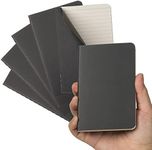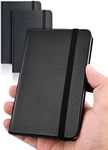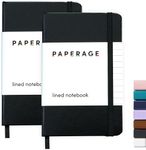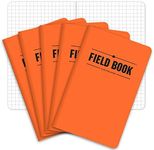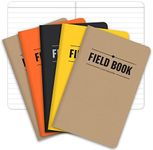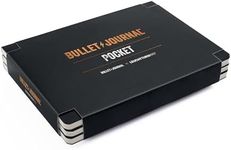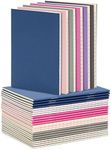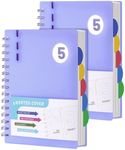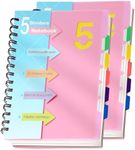Buying Guide for the Best Pocket Notebooks
Choosing the right pocket notebook can make a big difference in how you capture and organize your thoughts, ideas, and tasks. Pocket notebooks are designed to be portable and convenient, fitting easily into your pocket or bag. When selecting a pocket notebook, consider your specific needs and preferences to ensure you get the best fit for your lifestyle and usage habits.SizeSize is a crucial factor when choosing a pocket notebook because it determines how portable and convenient the notebook will be. Pocket notebooks typically come in sizes ranging from 3.5 x 5.5 inches to 4 x 6 inches. Smaller sizes are more portable and can easily fit into pockets, making them ideal for quick notes on the go. Larger sizes offer more writing space, which can be useful for more detailed notes or sketches. Consider how you plan to use the notebook and where you will carry it to determine the best size for you.
Paper QualityPaper quality affects the writing experience and durability of your notes. High-quality paper is thicker and smoother, reducing ink bleed-through and providing a better writing surface. Look for paper with a weight of at least 80gsm (grams per square meter) for a good balance of quality and portability. If you use fountain pens or markers, you may want to opt for even thicker paper to prevent bleed-through. Consider the type of pens or pencils you use and choose a paper quality that complements them.
BindingThe binding of a pocket notebook affects its durability and how easily it lays flat when open. Common binding types include stitched, stapled, and spiral. Stitched and stapled bindings are more durable and compact, making them ideal for carrying around. Spiral bindings allow the notebook to lay completely flat, which can be useful for writing or sketching on both sides of the page. Think about how you will use the notebook and whether you need it to lay flat or if durability is more important.
Cover MaterialThe cover material of a pocket notebook impacts its durability and appearance. Common cover materials include cardboard, plastic, and leather. Cardboard covers are lightweight and affordable but may wear out more quickly. Plastic covers offer better durability and protection against spills. Leather covers provide a premium feel and excellent durability but can be more expensive. Consider how much wear and tear your notebook will endure and choose a cover material that suits your needs and style preferences.
Page LayoutPage layout refers to the design of the pages inside the notebook, such as lined, blank, grid, or dotted. Lined pages are great for writing and note-taking, while blank pages are ideal for sketching and drawing. Grid and dotted pages offer more flexibility for both writing and drawing, making them suitable for bullet journaling and other creative uses. Think about how you plan to use the notebook and choose a page layout that will best support your activities.
Number of PagesThe number of pages in a pocket notebook determines how long it will last before you need a new one. Pocket notebooks typically range from 48 to 192 pages. Fewer pages make the notebook lighter and more portable, but you may need to replace it more often. More pages provide longer usage but can make the notebook bulkier. Consider how frequently you use the notebook and how often you are willing to replace it to determine the right number of pages for you.
